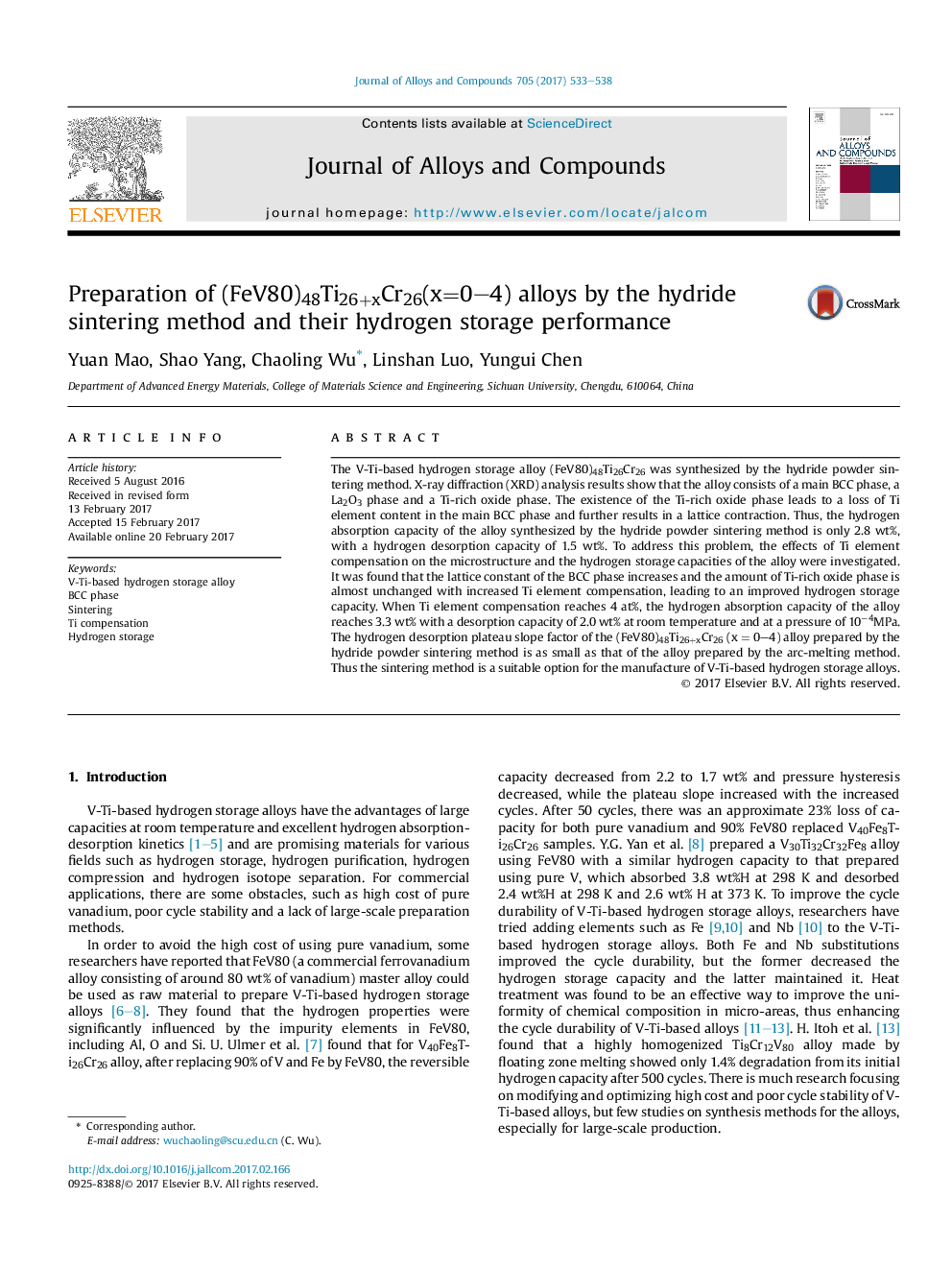| Article ID | Journal | Published Year | Pages | File Type |
|---|---|---|---|---|
| 5459831 | Journal of Alloys and Compounds | 2017 | 6 Pages |
Abstract
The V-Ti-based hydrogen storage alloy (FeV80)48Ti26Cr26 was synthesized by the hydride powder sintering method. X-ray diffraction (XRD) analysis results show that the alloy consists of a main BCC phase, a La2O3 phase and a Ti-rich oxide phase. The existence of the Ti-rich oxide phase leads to a loss of Ti element content in the main BCC phase and further results in a lattice contraction. Thus, the hydrogen absorption capacity of the alloy synthesized by the hydride powder sintering method is only 2.8 wt%, with a hydrogen desorption capacity of 1.5 wt%. To address this problem, the effects of Ti element compensation on the microstructure and the hydrogen storage capacities of the alloy were investigated. It was found that the lattice constant of the BCC phase increases and the amount of Ti-rich oxide phase is almost unchanged with increased Ti element compensation, leading to an improved hydrogen storage capacity. When Ti element compensation reaches 4 at%, the hydrogen absorption capacity of the alloy reaches 3.3 wt% with a desorption capacity of 2.0 wt% at room temperature and at a pressure of 10â4MPa. The hydrogen desorption plateau slope factor of the (FeV80)48Ti26+xCr26 (x = 0-4) alloy prepared by the hydride powder sintering method is as small as that of the alloy prepared by the arc-melting method. Thus the sintering method is a suitable option for the manufacture of V-Ti-based hydrogen storage alloys.
Keywords
Related Topics
Physical Sciences and Engineering
Materials Science
Metals and Alloys
Authors
Yuan Mao, Shao Yang, Chaoling Wu, Linshan Luo, Yungui Chen,
